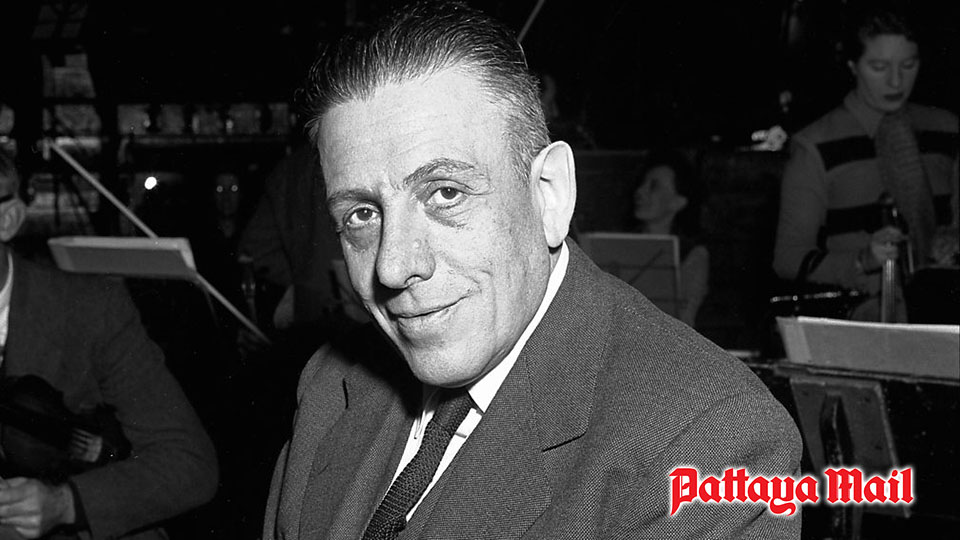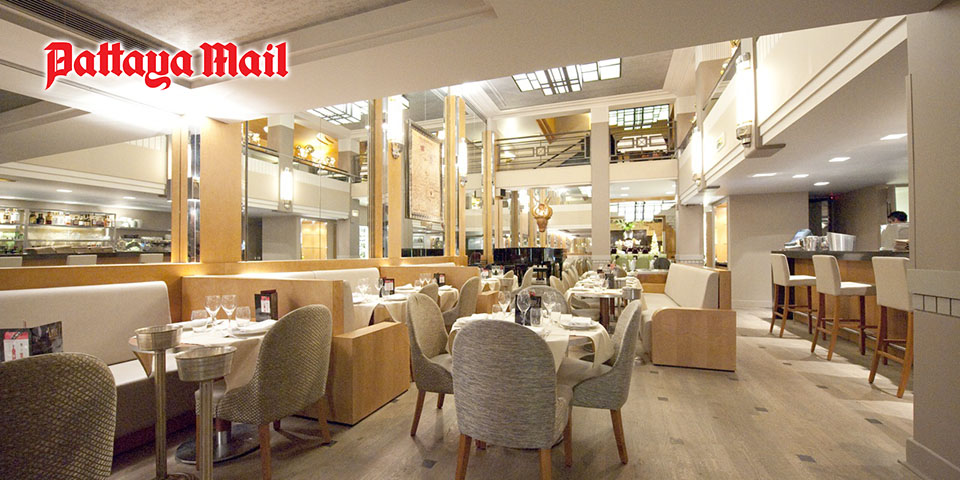
“Breathe Paris in”, wrote Victor Hugo. “It nourishes the soul.” Thomas Jefferson, the third president of the United States once remarked, “A walk about Paris will provide lessons in history, beauty and in the point of life.” In his 2004 book Crepuscule, Roman Payne reflected, “People wonder why so many writers come to live in Paris. I’ve been living ten years in Paris and the answer seems simple to me: because it’s the best place to pick ideas. Just like Italy, Spain…or Iran are the best places to pick saffron. If you want to pick opium poppies you go to Burma or South-East Asia. And if you want to pick novel ideas, you go to Paris.”
I know what he means. But it wasn’t only writers who came to Paris, it was artists, actors, dancers, composers and countless others who were attracted by the charisma and magnetism of that city. I used to visit Paris at every opportunity, usually just a few days; sometimes longer. From London it was an easy drive. I loved to take the car ferry across the English Channel from Dover to Calais. It was so much more romantic than shunting your car on to a train and hurtling through a subterranean tunnel in total darkness.
P & O car ferries used to have a “first-class” restaurant in which they served gargantuan English breakfasts, during the days when few people were concerned about cholesterol. Om one occasion, I arrived at the restaurant earlier than usual as the ship waited at the dock. At this hour of the morning, the restaurant was empty yet the tables were fully laid out with cutlery and glassware in readiness. The ship’s massive engines, inaudible on the upper decks, created minuscule vibrations throughout the vessel and caused the cutlery and glassware on the tables to tinkle softly. The effect was like being among clouds of tinkling symphonies composed of tiny, barely audible sounds. It was an enchanting experience.
As far as I was concerned, there was always something magical and passionately attractive about Paris despite the endless traffic jams and the famously indifferent waiters, though I always found Parisian waiters rather charming, especially if I spoke to them in French. So many evenings were spent in pleasant restaurants or delightful little bistros relaxing over a carafe or two of wine and letting the evening drift by. Paris is a wonderful city for sitting around doing nothing.

On every visit, I paid my ritual visit to Notre Dame, the medieval cathedral on the Île de la Cité, a small island in the middle of the river Seine. It was not for any religious reason but just to experience the sheer magnificence of the place. There was always a mystical, profound feeling inside this colossal building; perhaps a sense of unworldly omnipresence. There is a sometimes a singular quality about these old and venerable buildings that have been used as places of ritual and spiritual enlightenment for generations: you can almost touch the sanctified atmosphere. Notre Dame de Paris, to use its official name, has its origins in the 11th century and since its earliest days, singing was always at the centre of the religious services. The first polyphonic music by the 12th century master composers Leonin and Perotin was heard soon after the building was completed. Almost every French composer since has had some connection with Notre Dame.

Incidentally, the name City of Light comes from the mid-17th century when, after a prolonged period of war and civil unrest, King Louis XIV decided to restore public faith in law and order. In 1667 he arranged the recruitment of more policemen and had additional street lighting installed. Lanterns were placed on almost every main street and residents were asked to light their windows with candles and oil lamps. This was supposedly to prevent thieves or other undesirables from hiding in dark alleys and evading the police. Paris was thus one of the first European cities to adopt street lighting, but the nickname City of Light became more significant during the Age of Enlightenment during the 17th and the 18th centuries when Paris became renowned as a centre of education and the arts.
Paris is full of curiosities too. You don’t often find restaurants named after pieces of music, but there’s one in Paris. When working in Brazil from 1917 to 1919, the French composer Darius Milhaud (MEE-oh) was captivated by the vibrant popular music of the country and especially with a tango, entitled in Portuguese O Boi no Telhado, which the composer translated as Le Bœuf sur le Toit – The Ox on the Roof.

Back in Paris a few months later, Milhaud wrote the score for a surrealist comical ballet of the same name, using Brazilian popular songs and dances. This was the beginning of the Roaring Twenties, known in France as the années folles, when Paris was probably the most influential and insatiable cultural centre in the world. Milhaud and his composer friends had earlier formed a group called Les Six, which included Georges Auric, Arthur Honegger and Francis Poulenc. Milhaud later wrote, “the six names were chosen absolutely arbitrarily…simply because we knew each other and we were pals.” They all met at a popular artists’ bar called La Gaya in rue Duphot, which connects rue Saint Honoré with the majestic Boulevard des Capucines. The presence of Milhaud, Cocteau and their intellectual entourage made La Gaya immensely popular and in 1921, when the bar relocated, the owner renamed it Le Bœuf sur le Toit, presumably to ensure that Milhaud and his crowd would continue to patronize it.
And patronize it they did, together with dozens of other distinguished customers and hangers-on. Anyone who was anyone showed up at Le Bœuf at some point, including Coco Chanel, Charlie Chaplin, Maurice Chevalier, Jean Cocteau, Ernest Hemmingway and Igor Stravinsky. From the day it opened, Le Bœuf was the epicenter of cultural Paris. Not surprisingly, most people erroneously assumed that the ballet, which had become hugely popular, was named after the bar, not the other way around.
This exuberant, unbridled music is almost a sound-picture of The Roaring Twenties and will brighten your greyest of days. You get the impression of a selection of scenes pasted together like the contents of a scrapbook and this is partly where its charm lies. Much of Milhaud’s music is influenced by jazz and popular song, and he often used a technique known as polytonality, in which parts of the music are written in more than one key simultaneously to create a vaguely bizarre effect. You can hear an example at 00:31, near the beginning of the piece when the flutes are clearly playing in a different key to the rest of the orchestra.
The work was first performed at the Théâtre des Champs-Élysées in February 1920 with a scenario by Jean Cocteau. The ballet is set in a bar and consists of a sequence of scenes featuring a troupe of slightly surreal characters. Incidentally, Milhaud was also a composition teacher and one of his students included the songwriter Burt Bacharach, to whom Milhaud once said, “Don’t be afraid of writing something people can remember and whistle.” Bacharach later wrote well over a hundred hits, so it must have been good advice.
The Sinfonietta was a commission from the BBC in 1947 and was first performed in London the following year. The colourful music is light and dance-like, sometimes whimsical, sometimes haunting and sometimes pure Hollywood. Like Le Boeuf, it’s full of rapid scene-changes and musical surprises but a little more restrained and more reflective. Although there are echoes of the Twenties, by 1947 the world had become a different place and this seems to be reflected in the moods of the music.

Francis Poulenc was another of the regulars at Le Bœuf sur le toit. From the age of fourteen, he knew he was going to be a composer and during the war years he got to know Darius Milhaud, Georges Auric and Erik Satie. He was largely self-taught but has been described as one of the great melody-writers of the twentieth century. Listening to this most charming and approachable of works, you’d never guess that throughout his life, Poulenc was plagued with periods of manic-depression, nowadays described as bipolar disorder.

Oh, and in case you’re wondering, Le Bœuf sur le Toit still exists in Paris, in the form of an ultra-chic restaurant which has jazz evenings every Friday and Saturday. It’s at 34 rue du Colisée, near the Champs Élysées. As you’d expect, reservations are essential but if you ever decide to give it a try, don’t forget to take your credit card.








